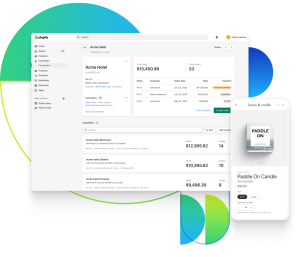By Maier Bianchi
MAGENTO 2 WAS RELEASED IN 2015, SPARKING A NEW ERA OF MAGENTO DEVELOPMENT IN WHICH THE FRONTEND FRAMEWORK WAS COMPLETELY CHANGED FROM WHAT MAGENTO 1 HAD TO OFFER.
RequireJS and KnockoutJS caused developers to have to take a different approach to building Magento themes and extensions. This was manifested in the Luma theme, which was the default out of the box frontend theme included with Magento 2.
Developing the frontend of Magento 2 became more difficult. Quick tasks on Magento 1 took developers much longer with Magento 2. This made it harder for businesses to succeed with this theme.
A FAST, DEVELOPER FRIENDLY FRONTEND IS NOT A LUXURY IN 2023. IT’S A NECESSITY.
You can tell a site is running a Luma based theme by the way pages load, and by the behavior of the product pages, cart pages, and category pages. It is highly dependent on javascript to render all elements of the page and as a result, has a lot of cumulative layout shifts (CLS) when a page loads. This is one of the factors contributing to a poor user experience and poor Google Core Web Vitals scores. Generally, these sites don’t test well on page speed tests due to the heavy amount of IS and CSS unless a lot of resources are spent on optimization.
Starting in 2010 for desktop and 2018 for mobile, Google began to use speed as a ranking factor in Search and Ads.
At these junctures, Google reminded website owners to address heavy javascript, CSS, and image loading as key ways to improve page speed.
Starting in 2021 Google rolled out a Page Experience Update that also took into account layout shifts, time to interactive, longest contentful paint, and first contentful pain as some of the ranking factors as well.
It has been shown many times that the faster a website loads the better it converts for ecommerce shoppers.
This combined with the Page Experience issues provided a damning set of conditions for the Magento 2 Luma frontend because though the product was powerful and customizable, the frontend was not natively equipped to compete in the landscape that followed the release of Magento 2.
In September 2018 Magento tried to solve this problem by releasing PWA Studio, which is a progressive web app frontend natively offered for Magento 2 based on React)S. This was a huge step forward for Magento because it allowed for a natively supported faster frontend.
One of the challenges of this project was that native support for all of Magento’s features would slowly roll out over the next four years and are still rolling out right now. The product has come a long way and is at a very stable point.

Building websites on PWA Studio is more readily achievable by a certain class of merchants who have larger budgets to support development and integrations.
This is because the Magento extensions being provided by extension developers and SaaS, and technology companies do not all come with frontend integrations and components for PWA Studio websites. Therefore, it is on the merchants and their developers to handle these integrations.
However, like many Single Page Applications, Magento PWA studio struggles with achieving good Google Pagespeed and Core Web Vital metrics on mobile, due to the fact that a large amount of JavaScript has to be loaded by the browser before the website becomes fully interactive.
Due to the various reasons mentioned above, a new solution was needed to keep Magento 2 competitive on the frontend side in 2022’s eCommerce landscape.
There was a need to enhance the developer experience so that non-enterprise merchants could competitively maintain a Magento 2 site.
Enter Hyvä.
Hyvä Themes is a completely revamped frontend framework for Magento 2 that provides a more pleasant experience for developers, a more rapid time to market for retailers, and most importantly a Magento 2 website that scores very high on Page Speed tests.
Gone are Require JS and Knockout JS as core components of the theme.
Using Alpine JS and adding Tailwind as a CSS framework, the key goals of Hyvä were to solve the poor developer experience and the poor performance / UX of the Luma theme.

HYVÄ IS A COMPLETELY REVAMPED FRONTEND FRAMEWORK FOR MAGENTO 2 THAT PROVIDES A MORE PLEASANT EXPERIENCE FOR DEVELOPERS, A MORE RAPID TIME TO MARKET FOR RETAILERS, AND MOST IMPORTANTLY A MAGENTO 2 WEBSITE THAT SCORES VERY HIGH ON PAGE SPEED TESTS.
One caveat is to look for Module compatibility from 3rd party developers, but Hyvä is actively providing conditions for these modules to be developed by continuously supporting the theme through their Slack community. The skill set to make modules compatible with Hyvä is within the skill set of standard Magento 2 frontend and backend developers.
In addition to modules made compatible by the Hyvä community, many Vendors now support Hyvä out of the box for their most popular extensions and are continuously investing into making more extensions compatible.
There is a communal sense of optimism that there are now multiple viable paths to faster, better performing frontends for Magento merchants in the form of PWA Studio and Hyvä.
There has never been a better time for merchants who are adopting Magento 2 or who are committed to Magento 2 to build an outstanding website for their customers.
Goodbye Luma, and hello to new horizons and new possibilities.



